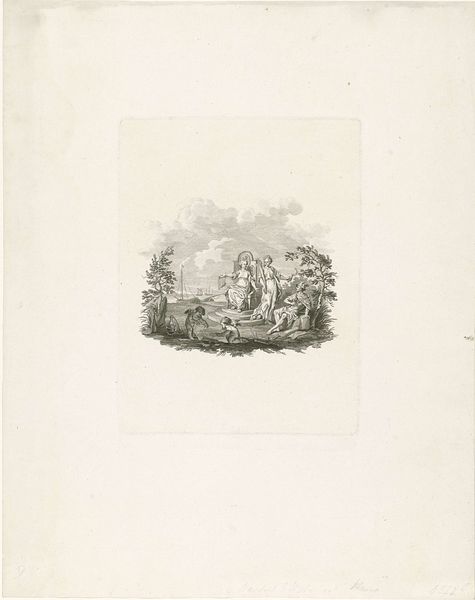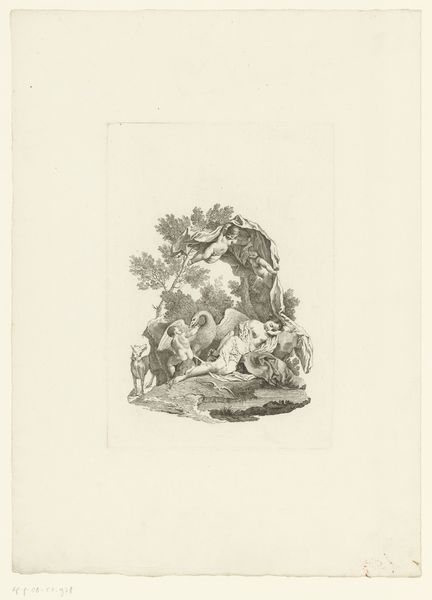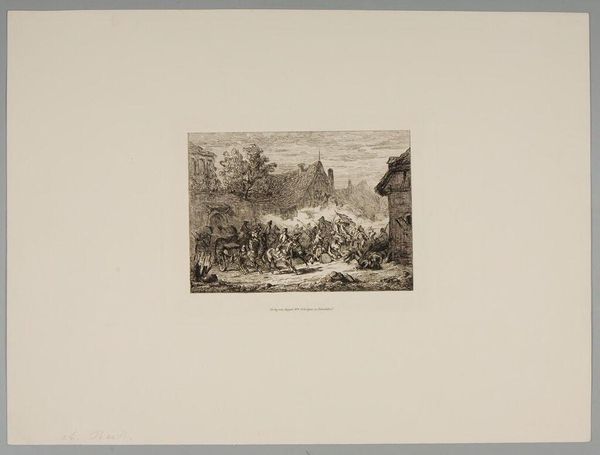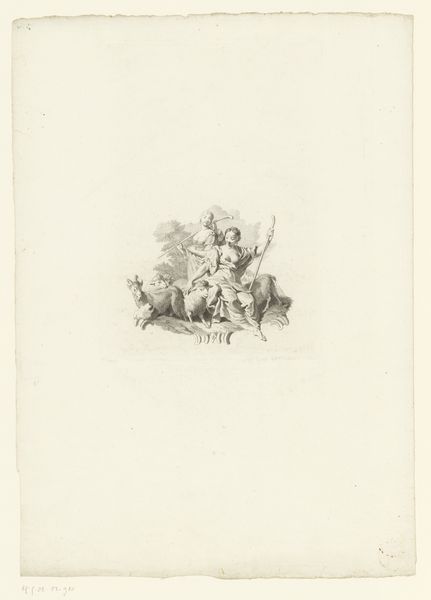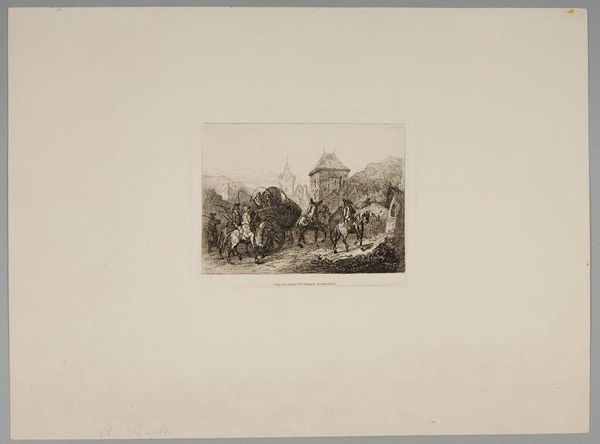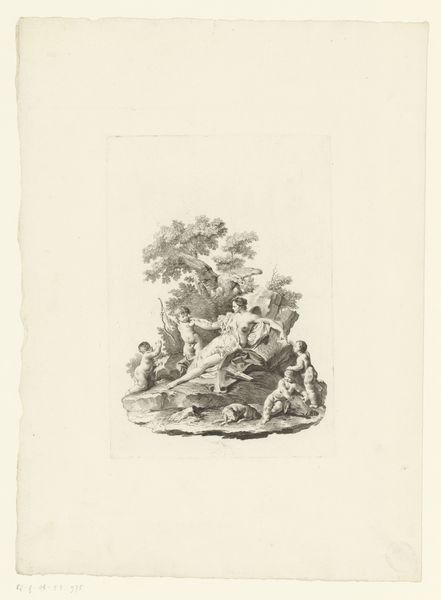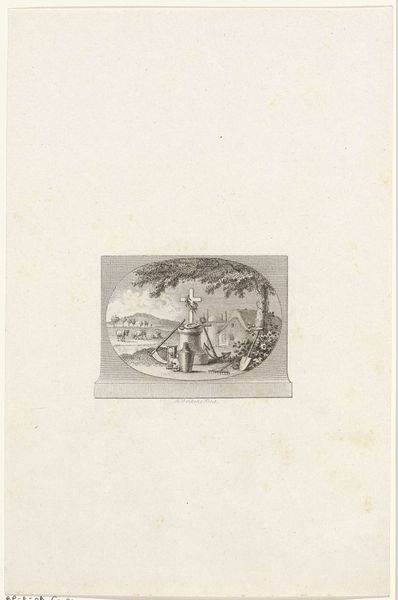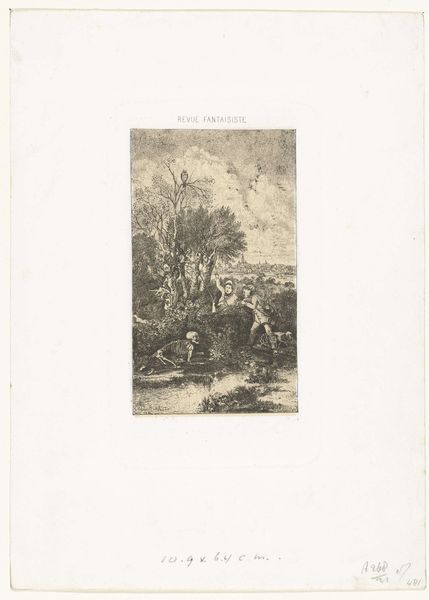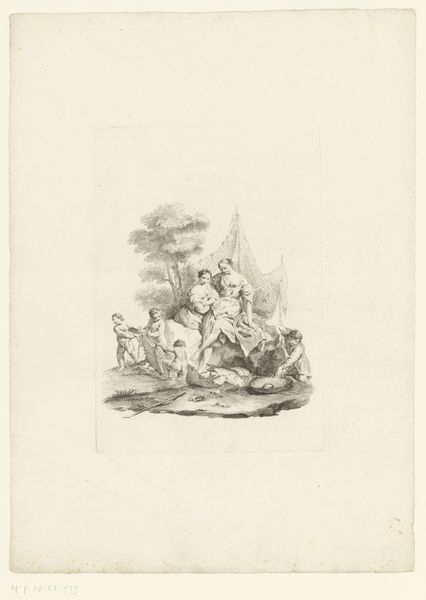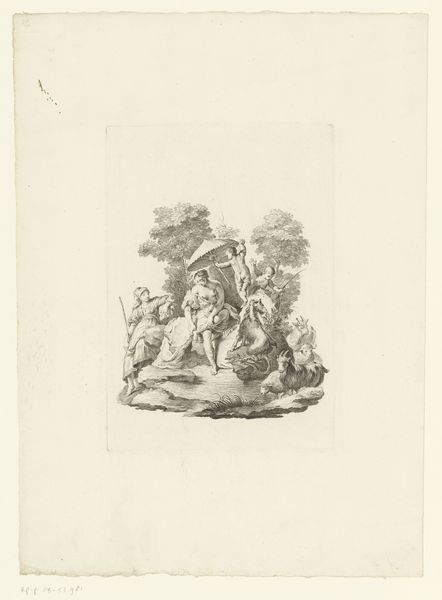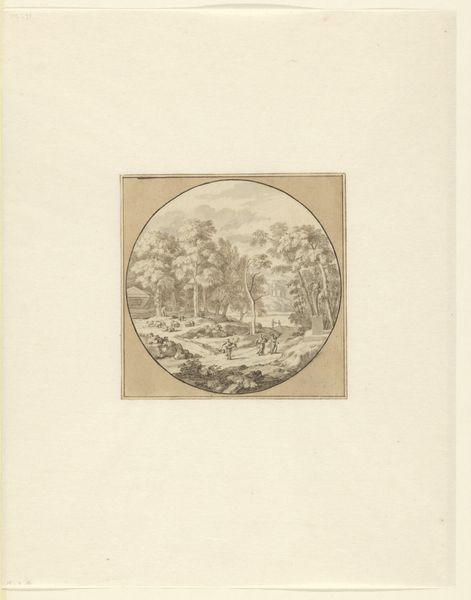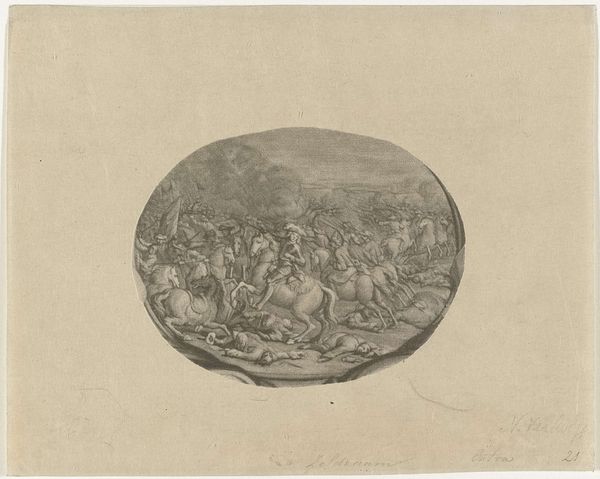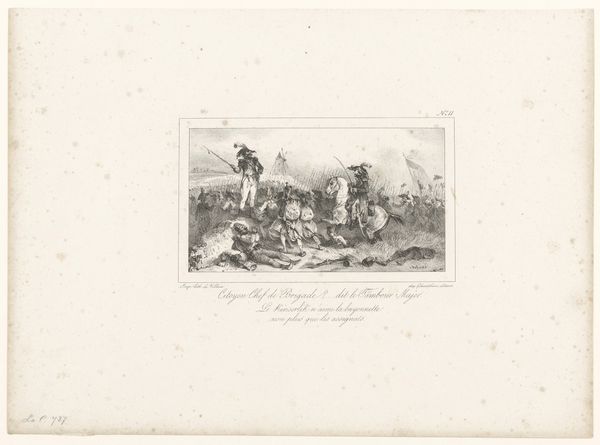
Israëlieten genezen van giftige slangebeten door naar bronzen slang van Mozes te kijken 1807 - 1855
0:00
0:00
Dimensions: height 252 mm, width 164 mm
Copyright: Rijks Museum: Open Domain
Curator: Let's examine this engraving by Johannes Alexander Rudolf Best, likely created between 1807 and 1855, titled "Israelites Healed from Poisonous Snake Bites by Looking at the Bronze Serpent of Moses." Editor: The immediate impression is of tightly compressed chaos. The artist seems intent on portraying a multitude of figures within a rather restricted space. The overwhelming monochrome lends the scene a solemnity that is both haunting and evocative. Curator: The composition directs our gaze towards the center where we see the raised bronze serpent, an obvious focal point established through positioning and tonal contrast. The artist’s choice of engraving allows for meticulous detailing of each figure, effectively conveying texture and form even in this monochromatic scheme. Note how Best manipulates line weight to suggest depth. Editor: Snakes in art have long held potent symbolism; often associated with healing, transformation, but also treachery and temptation. The Hebrew Bible offers more specific connotations, but that primal resonance seems perpetually accessible. And in the context of the Biblical narrative depicted, its elevated position suggests its sacralisation and potent agency in bestowing healing and protection. Curator: Precisely. The scene encapsulates a narrative of faith and divine intervention. The emotional range – fear, suffering, and ultimately, relief – is subtly conveyed through the subjects' postures and expressions. Best masterfully depicts the drama and emotional impact of this biblical episode. Editor: The use of chiaroscuro significantly amplifies the drama inherent in the moment. Dark, dense shading contrasts with the few areas of light, thus augmenting the emotional intensity of a truly compelling composition. It captures not just a historical scene, but also the weight of collective anxiety and then its release through belief. Curator: In conclusion, this print presents us with an adept application of baroque techniques in a scaled-down, intimate format, demonstrating Best’s control over tonal gradations to realize a vivid emotional tenor, though his deployment of structure and perspective seem traditional by the standards of the era. Editor: Absolutely, and it is not merely a reproduction of scripture; the artist infuses it with archetypal meaning which transcends specific faiths. It highlights both fear and the possibility of redemption – a powerful and surprisingly resonant depiction, given the artwork's age.
Comments
No comments
Be the first to comment and join the conversation on the ultimate creative platform.
